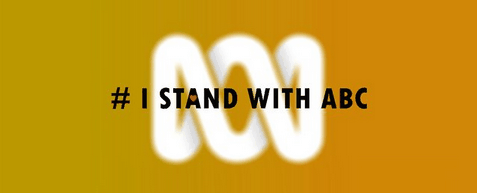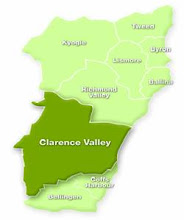Recently I received a ‘phone call from an Iluka resident which began along the lines of: I met you once at the bus stop in Maclean and I wonder if you know…
What this very concerned person from the opposite side of the Clarence River then told me was that Clarence Valley Council chose to advertise an approx. 19ha 162 lot low density residential subdivision with 10 new roads within Lot 99 in DP 823635 Hickey Street, Iluka on 24 December 2015 – Christmas Eve – and also to start a 28 day exhibition period from Boxing Day, 26 December. [Clarence Valley Council, block_ad_
December_24_26.pdf]
From my experience, local government only acts in this manner if both it and the developer of record do not want informed community scrutiny of a ‘favoured’ development application (DA).
The development application SUB2015/0034 submitted by NSW central coast development company Stevens Holdings Pty Ltd (trading as Stevens Group) was first lodged with Clarence Valley Council on 11 December 2015 and then referred to the Northern Joint Regional Planning Panel by council administration on or about 18 December 2015.
The owner of the land in question is Birrigan Gargle Local Aboriginal Land Council.
Clarence Valley Council states of this DA:
Clarence Valley Council is the consent authority and the Northern Joint Regional Planning Panel has the function of determining the application. Any submissions made will be provided to the Joint Regional Planning Panel and may be viewed by other people with an interest in the application. The development application and documents accompanying the application are on exhibition and may be inspected at Council’s customer service centres*. Submissions close 4pm, January 22, 2016.
Any person may make a written submission to Council during the exhibition period concerning the development application. If you have any submissions you wish to make regarding any proposed development please do so in writing, addressed to the General Manager, during the exhibition period. Where a submission is an objection to a proposed development the submission must set out the grounds for the objection.
It does not say that any resident wishing to make comment directly to the Northern Joint Regional Planning Panel on the subject of this proposed development can do so online here.
The state-appointed panellists for the Joint Regional Planning Panel are: Garry West (Chair), Pamela Westing and John Griffin, with Bruce Clarke as an alternate.
When considering development proposals within the Clarence Valley they are joined by Mayor Richie Williamson, Deputy Mayor Craig Howe, with Cr. Andrew Baker as the alternate.
The timing of the DA advertising is not the only concern. Although SUB2015/0034 is clearly on public exhibition, there are currently no details on the council website’s “On exhibition” page.
Interested residents have to physically attend either the Maclean or Grafton council chambers if they want information on this DA. This initially created a dilemma for concerned residents and ratepayers as Maclean and Grafton council chambers were closed between 24 December 2015 and 3 January 2016.
This of course effectively reduced the length of time that DA documents could be researched in preparation for a submission by 11 days.
By 6 January media attention and pressure from individual community members saw council administration extend the exhibition period to 4pm on 12 February 2016 and place a copy of the DA exhibition documents in Iluka township. However, it remains a matter of concern that council administration thought the original truncated exhibition period was acceptable.
I have no doubt that the owners of the land are willing to be transparent in their actions concerning this proposed subdivision, however when a large development company is also involved in a land release it is wise for any community to be wary.
So this parcel of land deserves a closer look.
Clarence Valley Council development services manager Clem Rhoden said the parcel of land at lot 99 Hickey St was opposite Iluka Golf Club and encompassed an area of approximately 194,031sq m.
Secondly, this lot (bounded by Hickey Street, Elizabeth Street and Iluka Road) is covered by what appears to be relatively dense tree cover:
 Aerial Snapshot of Hickey Street Iluka NSW, Google Earth, 4 January 2016
Aerial Snapshot of Hickey Street Iluka NSW, Google Earth, 4 January 2016
Snapshot of section of the southern boundary of Lot 99 Hickey Street, Iluka NSW
To prepare the land for 162 residential lots this block will have to be extensively cleared and, it is possible that this clearing may entail the destruction of coastal cypress:
Coastal Cypress Pine Forest is apparently restricted to the NSW North Coast bioregion.
Council itself admits that:
calls are still frequent from Clarence Valley WIRES who reported six calls regarding injuries in 2009, suggesting there may still be a residual population surviving in the Iluka area or frequenting the area from the adjoining Bunjalung National Park. It is therefore important to reduce further clearing and protect and rehabilitate those areas that are remaining. Particular focus should be given to restoring fragmented areas of koala habitat, lands within identified habitat linkages and koala habitat buffers, and lands adjacent to contiguous blocks of existing koala habitat (McAlpine et al. 2007). [Comprehensive Koala Plan of Management for the Ashby, Woombah & Iluka localities in the Clarence Valley LGA, undated];
and
A further 260 koala food trees (approximately) were inspected for evidence of koala activity during eight transect searches within the Iluka study area….
field observations and anecdotal observations confirm the presence of what appears to be a highly dispersed but small population cell at Iluka…
When comparing this Biolink koala map below with the Google Earth map above it is clear that the possibility exists that koalas may still travel across and perhaps feed in Lot 99 Hickey Street, Iluka.
On 20 January 2012 The Daily Examiner on Page 5 of that issue reported that:
AFTER spotting a mother koala and its baby on 19ha of Birrigan Gargle land that could be cleared, Clarence Environmental Centre secretary John Edwards said bulldozing and developing the wildlife corridor would amount to environmental suicide.
While surveying the area two months ago, Mr Edwards said he spotted two endangered species, the mother koala and baby and a coastal pine community.
Image of koala female with infant on Lot 99 Hickey Street, Iluka. Supplied by Iluka resident. Date unknown.
Finally there is the rather mundane but very important matter of how the soil would be stabilized after large-scale clearing and before construction is finished, if that will impact on adjacent land and where the storm water from roofs, gardens and road surfaces will be directed.
Then there is this disturbing online advertisement which appears to have been on various real estate websites since at least September 2015 and boldly anticipates approval by both the Northern Joint Regional Planning Panel and Clarence Valley Council:
Is any or all of this what Council is trying to hide from Clarence Valley residents and ratepayers by sneakily activating the clock on this DA over the Christmas holidays?
Or is there something more?
With these questions in mind I went to look at the exhibition documents:
Snapshot taken from Report on PCA & Preliminary Geotechnical Investigation: Iluka Subdivision
The site is roughly trapezoidal in shape and is bounded by: Iluka Golf Club to the north; Iluka Road and the Iluka Nature Reserve to the east; Undeveloped land to the south, west and north west; and Existing residential development to the south west.
[Cardno Geotech Solutions, August 2015, Report on PCA & Preliminary Geotechnical Investigation: Iluka Subdivision, p.1]
Having now sighted the Report
on PCA & Preliminary Geotechnical Investigation: Iluka Subdivision and
Statement of Environmental Effects: 162 Lot Residential
Subdivision Lot 99, DP 823635 Hickey Street, Iluka, prepared for Stevens Holdings Pty Ltd/ Shellharbour Unit Trust (click on link to access documents), it is clear that this parcel of land is partially low-lying, gently undulating back-dunes, potentially prone to localised flooding in sections and, was covered by Mineral Lease 7 (held by L. Foyster) a mineral sand mining lease active between 1958-1978. It is likely that the subject site was sand mined sometime between 1966 and 1978 [Keystone Ecological, 2015, Statement of Environmental Effects, Summary].
Vegetation is generally thick semi-mature to mature native trees and coastal scrub across the site and, includes an unspecified number of Eucalyptus tereticornis Forest Red Gums, Eucalyptus propinqua Small-fruited Grey Gum and Corymbia intermedia Pink Bloodwood - all koala food trees, with the first two species being preferred by these animals.
It is also clear that 16.71 ha of koala habitat is to be removed to make way for 162 houses and an estimated 400-500 new residents living on the outskirts of Iluka township.
The Phascolarctos cinereus Koala observed on site was walking along the ground – not foraging in the trees or moving through the canopy – and moving from south to north [ibid, p.32].
Apart from koala habitat existing on the land evidence was found on site of coastal emu which is listed as endangered under state law:
Snapshot taken from Keystone Ecological, Statement of Environmental Effects:
162 Lot Residential Subdivision Lot 99, DP 823635 Hickey Street, Iluka, October 2015
Image of coastal emu outside the boundary of the 135 hectare Iluka Nature Reserve.
Supplied by Iluka resident. Date unknown.
As for the three internal parks listed on the DA plan – the first is 1.76 hectares, the second is 1 hectare but only 50 metres wide for its entire length, while the third (to protect an Aboriginal scar tree) is only 0.075 of a hectare and wedged in the middle a row of houses. This brings the total internal reserve land to a fragmented 2.83 hectares.
What is not yet clear is how much additional infrastructure and services will be required or how much in developer contributions Clarence Valley Council is expecting to receive and if this will cover all additional infrastructure and services outlays.
The bottom line with regard to Lot 99 Hickey Street, Iluka is that it is a demonstrably ecologically sensitive parcel of land admitted as being “identified as an ‘environmentally sensitive area’ being in, or within 100 metres of an area identified as a wetland of international significance or a world heritage area and complying development may not be carried out on part of this land” [Cardno Geotech Solutions, August 2015, Report on PCA & Preliminary Geotechnical Investigation: Iluka Subdivision, p.5] and, even though Clarence Valley Council has zoned the lot R2 Low Density Residential, the size of the built footprint of this development is not appropriate for the location and the plan provides ineffective native flora and fauna safeguards.
If the developer, the landowner and council administration genuinely wish to see this lot developed in a sustainable manner then they should all revisit what they are progressing so enthusiastically at present and, as a bare minimum, reconfigure the plan to significantly reduce the number of lots and provide genuine wildlife corridors which would continue to allow vulnerable koalas, endangered coastal emus and other wildlife much the same access to Iluka Nature Reserve and the national park that native animals use today.
UPDATE
Coastal cypress pine community on Lot 99 Hickey Street, Iluka (and adjacent lots) represented by blue flags.
Image supplied.
It is important to note that even small patches that have been disturbed in the past by clearing, or fire are still considered to be important remnants of Coastal Cypress Pine Forest and meet the criteria of being an EEC. [NSW Department of Environment and Climate Change, Coastal Cypress Pine Forest in the NSWNorth Coast Bioregion, 2009]














